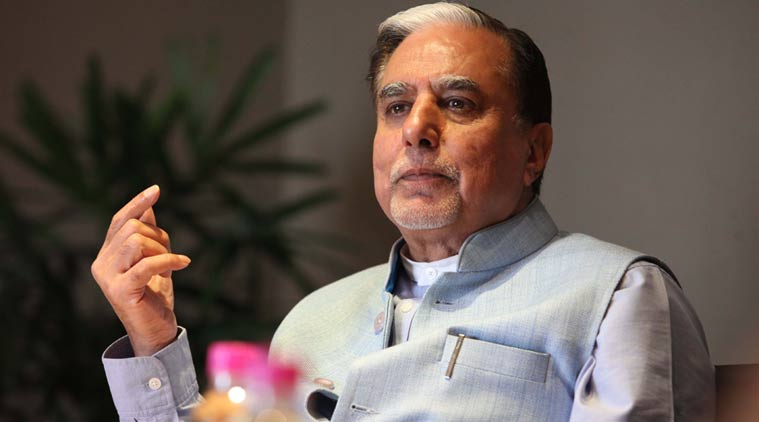Case of Zee: how share-pledging by promoters works — and risks it entails
The Group accepted it has an overall debt of around Rs 20,000 crore, but said it was close to selling projects worth that sum.
 Subhash Chandra
Subhash Chandra
The financial markets, which are yet to recover fully from the IL&FS fiasco, suffered fresh jitters on January 25 as shares of the Zee Group tanked, wiping out over Rs 13,000 crore of market capitalisation. Lenders who had given money to the promoters of Zee entities (part of the Essel Group of Subhash Chandra) against shares pledged by the promoters, sold to safeguard their money — triggering turmoil in the markets that underlined the issues with the ‘share-pledging’ or ‘loan-against-shares (LAS)’ system.
The January 25 crash
Listed companies of the Essel Group fell (the Zee Entertainment scrip crashed over 26%) after a report that the Serious Fraud Investigation Office (SFIO) was investigating a company called Nityank Infrapower for deposits of over Rs 3,000 crore just after the November 8, 2016 demonetisation announcement. The report claimed Nityank Infrapower and a group of alleged shell firms had carried out financial transactions that involved some companies associated with the Essel Group between 2015 and 2017. In an open letter, Subhash Chandra accused “negative forces” of “sabotaging Zee Entertainment’s strategic sale process”.
He also said the IL&FS meltdown had halted rollovers and diminished the Group’s ability to service borrowings, and admitted that he had made wrong business decisions. The letter betrayed panic, and suggested that Chandra could be staring at the possibility of losing control of the company. The situation became especially parlous after lenders holding pledged shares resorted to a fire sale of these holdings.
Arrangement with banks
After the January 25 crash, the Essel Group said its promoters had had a detailed meeting with lending entities comprising mutual funds, Non Banking Financial Companies (NBFCs) and banks, in which it was decided that there would not be any event of “default declared due to the steep fall in price”. It said there would be “synergy and co-operation amongst lenders leading to a unified approach”, and that the lenders “drew comfort from reiteration by promoters for a speedy resolution through a strategic sale in a time bound manner”. The banks agreed to not sell shares pledged by Zee promoters for three months, giving them time to raise money through stake sale to other investors. Zee Entertainment shares bounced back on January 28, gaining 16.64% after the group said it had “arrived at an understanding” with lenders.
The problem of debt
The Group accepted it has an overall debt of around Rs 20,000 crore, but said it was close to selling projects worth that sum. Almost 60% of the Rs 20,000 crore it planned to raise (Rs 12,000 crore) would be used to repay debt related to these projects, and the balance to release pledged shares, the Group said.
Debt schemes of mutual funds have invested over Rs 8,000 crore in Zee Group firms. If the debt instruments of Zee Group firms crash, mutual funds will be a major casualty, but they have the option of keeping such instruments in a separate portfolio — called side-pocketing — introduced by the Securities and Exchange Board of India (SEBI) recently. The episode has given rise to worries among mutual funds, which burnt their fingers in the defaults by the IL&FS Group.
On the other hand, mutual funds have an exposure of over Rs 12,000 crore in Essel Group firms through the LAS route. While this won’t directly impact the company, promoters risk losing control when lenders sell pledged shares. The promoters’ holding in Zee Entertainment is 41.6%, of which 59.3% is pledged. Had lenders sold all Chandra’s pledged shares, his holding would have come down by 20%.
How share-pledging works
To raise resources for acquisition and expansion, Chandra pledged his shares in Zee. High pledging levels are typically not considered a good sign by investors, as a downturn in the market price can lead to invocation and change in management. Further, decline in the level of share-pledging may indicate scaling down in stress.
Promoters of listed companies also pledge shares as collateral to secure bank loans. Banks have a right to sell pledged shares in case the borrower defaults, or when the shares crash in the stock market.
To raise resources, promoters of as many as 2,972 companies have pledged their shares — adding up to a value of Rs 2,20,708.38 crore, according to data available from the BSE. Promoters need money for both personal and business reasons. However, in order to retain their ownership, promoters are required to hold shares in a majority. If they raise funds by further selling their shares in the open market they lose ownership. Therefore they, raise funds by pledging their shares in exchange for loans.
“Generally, banks lend an amount that is less than the market price of the shares. (Banks retain a security margin.) If the share price falls, promoters are required to offer more shares. In case the promoters fail to restore the bank’s collateral limit, the bank can sell the shares,” according to Kotak Securities.
Analysts say share-pledging by promoters make investors insecure about the company’s financial health, which leads to a fall in share prices. Banks would then require the promoters to top up their collateral by pledging more shares. And the fear of lenders selling the collateral makes the investor feel vulnerable. This could trigger distress sales.



- 01
- 02
- 03
- 04
- 05




































